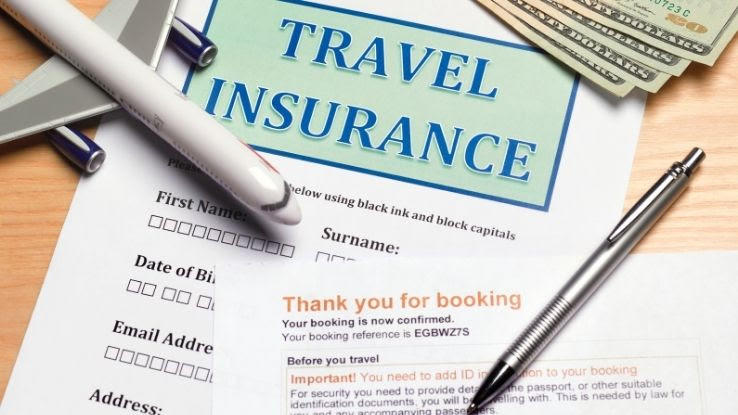Not known Facts About Pacific Prime
Wiki Article
Get This Report about Pacific Prime
Table of ContentsGet This Report on Pacific PrimeA Biased View of Pacific PrimeIndicators on Pacific Prime You Should KnowSome Ideas on Pacific Prime You Need To KnowPacific Prime for Dummies

This is because the data were accumulated for a period of strong financial performance. Of the estimated 42 million people who were uninsured, just about about 420,000 (concerning 1 percent) were under 65 years of age, the age at which most Americans end up being eligible for Medicare; 32 million were grownups in between ages 18 and 65, about 19 percent of all adults in this age team; and 10 million were children under 18 years of age, regarding 13.9 percent of all youngsters (Mills, 2000).
These estimates of the number of persons without insurance are created from the annual March Supplement to the Current Population Study (CPS), performed by the Census Bureau. Unless otherwise noted, national price quotes of individuals without health insurance policy and proportions of the population with different type of insurance coverage are based on the CPS, the most commonly made use of source of quotes of insurance protection and uninsurance prices.
How Pacific Prime can Save You Time, Stress, and Money.

Still, the CPS is particularly helpful since it produces annual price quotes reasonably promptly, reporting the previous year's insurance policy coverage estimates each September, and because it is the basis for a regular collection of estimates for more than two decades, permitting analysis of trends in insurance coverage gradually. For these reasons, as well as the considerable usage of the CPS in other studies of insurance policy coverage that exist in this record, we depend on CPS estimates, with constraints noted.

The price quote of the number of without insurance people increases when a population's insurance policy condition is tracked for several years. Over a three-year duration starting early in 1993, 72 million individuals, 29 percent of the U.S. https://canvas.instructure.com/eportfolios/2829699/Home/Pacific_Prime_Your_Ultimate_Destination_for_Insurance_Solutions. populace, lacked protection for a minimum of one month. Within a single year (1994 ), 53 million people experienced at the very least a month without coverage (Bennefield, 1998a)
6 out read this post here of every ten without insurance grownups are themselves employed. Working does improve the chance that one and one's household members will certainly have insurance, it is not a warranty. Even participants of households with 2 permanent wage income earners have almost a one-in-ten opportunity of being uninsured (9.1 percent without insurance rate) (Hoffman and Pohl, 2000).
The Best Guide To Pacific Prime
New immigrants make up a substantial percentage of people without medical insurance. One analysis has attributed a significant section of the recent development in the size of the U.S. without insurance populace to immigrants who got here in the nation between 1994 and 1998 (Camarota and Edwards, 2000). Current immigrants (those that concerned the USA within the previous 4 years) do have a high price of being without insurance (46 percent), but they and their kids represent simply 6 percent of those without insurance coverage country wide (Holahan et al., 2001).The connection in between medical insurance and access to care is well established, as documented later in this chapter. Although the relationship between medical insurance and health and wellness results is neither straight nor basic, an extensive medical and health services research literature web links medical insurance protection to enhanced access to care, much better high quality, and improved personal and population wellness standing.
Degrees of analysis for examining the results of uninsurance. This discussion of health insurance policy coverage concentrates mostly on the U.S. populace under age 65 since practically all Americans 65 and older have Medicare or various other public insurance coverage. It concentrates specifically on those without any kind of health and wellness insurance policy for any type of size of time.
Everything about Pacific Prime
The problems encountered by the underinsured are in some respects similar to those dealt with by the uninsured, although they are usually less severe. Health insurance policy, nevertheless, is neither required neither sufficient to obtain accessibility to medical solutions. The independent and direct result of health and wellness insurance protection on access to wellness services is well developed.
Others will get the healthcare they need also without health and wellness insurance policy, by paying for it expense or seeking it from providers that offer treatment totally free or at very subsidized rates. For still others, medical insurance alone does not make certain receipt of treatment as a result of other nonfinancial obstacles, such as a lack of wellness care suppliers in their community, restricted accessibility to transportation, illiteracy, or etymological and social differences.
The Definitive Guide for Pacific Prime
Official study about without insurance populaces in the United States dates to the late 1920s and early 1930s when the Committee on the Expense of Medical Treatment generated a collection of records concerning funding physician office check outs and hospital stays. This concern came to be significant as the numbers of medically indigent climbed up throughout the Great Depression.Report this wiki page